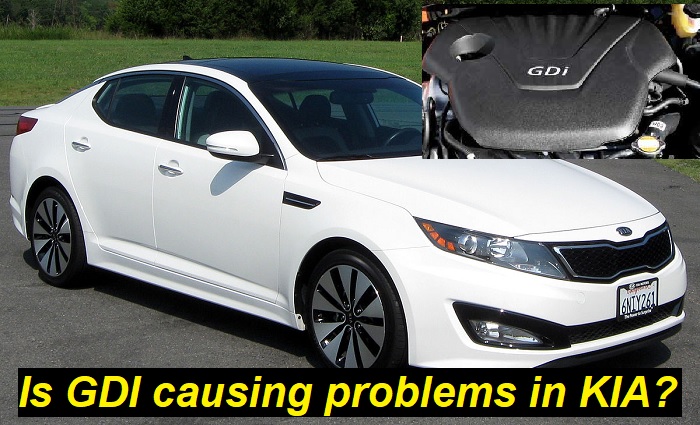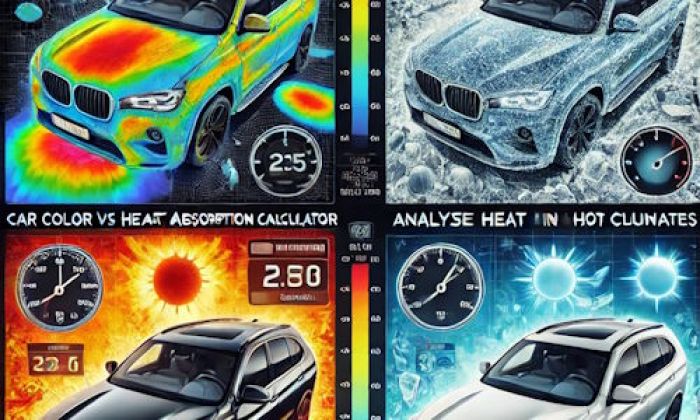We've been asked many times what GDI means in KIA and how these engines differ from all other conventional gasoline engines. So, today we'll tell you the difference between GDI and simple engines and we'll also talk about KIA engines' longevity, durability, and quality. This is going to be really interesting.
We'll not focus on a certain engine, but we'll talk about the GDI family. GDI stands for Gasoline Direct Injection and this name gives us a strong hint of what makes these engines different. It's actually the injection system. But let's see what advantages and problems this system can have in your KIA vehicles.

Here's what we'll be talking about:
- KIA GDI system pros and cons.
- What is the construction of the GDI injection?
- What are some common problems with the GDI engines?
- Should you buy a KIA vehicle with a GDI engine?
Let's get started!
What are the main advantages of the GDI system?
So, the GDI engine is basically a simple naturally aspirated engine that has direct injection instead of conventional fuel injection. In short, the GDI system injects the fuel directly into the combustion chambers. This helps reduce fuel consumption and increase the efficiency of the engine.
Actually, we have a lot of other engines on the market that have direct injection. For example, Ford's 2.0 FlexFuel engine which was extremely popular in the Focus also has direct injection. So, we are familiar with this technology. But in KIA vehicles, it has some other important features making GDI engines unique.
Here are some advantages you can get with a GDI engine:
- Much better gas mileage. We can compare an average 1.6 engine with the 1.6 GDI and see that the gas mileage differs by 20% and more. It means that the GDI engines use fuel much more efficiently. And this is important in the long run because you can pay less for driving your vehicle.
- More power. Usually, GDI engines offer much more power than the engines with similar displacement but with a conventional injection system. Again, the difference is about 25-30%. Especially, you will feel the difference at the low range of RPM, so in the city driving.
- Better emissions. These engines don't need a huge set of catalytic converters or a very complicated EGR system to clean the gasses. Thanks to lower fuel consumption, they are more ecological. So, the cat converters are smaller and cheaper which is another important advantage for a car owner.
- Better acceleration. Thanks to more power and better efficiency at low RPM, these engines are very good at accelerating. Even without a turbocharger, they feel like turbocharged engines. This is a big advantage for those who live active driving.
These engines feel great. Once you touch the acceleration pedal, they start revving up. They are easy to rotate, and they don't need a lot of time to start accelerating. And that's why you just feel that the engine under the hood is turbocharged or at least it has big displacement. But no, you have just a small engine without a turbocharger. Magic!
Of course, this magic has some disadvantages and you should also know about them.
What are some downsides of the GDI engines?
The KIA GDI engines are not bad, but we can still find some bad sides to tell you about. For example, you should know that these engines will need proper injector cleaning much more often than a simple MPFI engine. Also, they may fail and you'll have to pay a lot if there is a need to replace fuel injectors or some other parts of the vehicle.
Here are some of the most important downsides of the GDI engines in KIA cars:
- Carbon buildup. Injectors may clog very fast just because of carbon in the fuel. You will need to clean the injectors to make them work properly.
- Expensive maintenance. To replace the injectors, you will probably need to get a loan. The system is extremely expensive to repair and yes, it will fail sooner or later.
- Initial price. These engines are more expensive initially because they contain extremely expensive injectors and a lot of electronic blocks that control the injection process.
- Catalytic converter's location. In a lot of GDI vehicles, the cat converters are integrated into the exhaust manifold and this leads to bad troubles. Once the cat converter fails, the ceramic elements may get into the cylinders and scratch the block.
- Complex construction. The design of these engines makes it really hard to repair them when it comes to the fuel supply system. And this can be a problem for high-mileage vehicles.
Well, now you know that these engines are not problem-free. KIA has made a lot of strange decisions like these cat converters that are integrated into the manifold. They may just destroy the engine at 100,000 miles which is not very good for a modern unit. But still, at this point, we have more advantages than disadvantages.
What GDI engines are available in KIA cars?
In the American market, the GDI engines were used in many KIA cars and they had different displacements: 1.6, 2.0, 2.4, etc. These are actually Hyundai engines that have also been used in many Hyundai vehicles all over the world.
These engines have powered different cars like the Sportage, the Soul, the Optima, etc. You can easily know that your vehicle has a GDI engine. Just open the hood and look at the plastic cover on your engine. The original cover will say "GDI" if this is a direct-injection engine.
Now, KIA offers the next generation of Smartstream engines in most of the new models. They are also direct injection engines, but they all have turbochargers and are more efficient than the previous generation of engines.
Also, we know some vehicles that are equipped with T-GDI engines. This T letter stands for Turbo and it means that the engine is equipped with a turbocharger. Actually, the T-GDI engines were thought to be one of the most efficient turbocharged engine families on the market.
The longevity of the GDI engines
Here, we need to clarify what we mean by longevity.
All GDI engines can go over 200,000 miles. The bigger-displacement engines can even hit the 250,000-mile mark. But they are hard to repair, so after this mileage, you should just replace them.
The economically rational line is 150,000 miles for the GDI engines. After that, they start causing a lot of problems and are expensive to run. We would say that all cars equipped with the GDI engines should be driven very carefully after they reach the 150,000-mile mark.
After 100,000 miles, these engines start losing their performance and other important advantages. Their injection system gets problems and you have to put up with it or go to a repair shop and spend thousands of dollars for maintenance.
So, the actual longevity of the GDI engines depends on what we understand by the term longevity. We wouldn't drive KIA cars equipped with GDI engines for more than 150,000 miles. But they obviously can go more.
Buying a used KIA with the GDI engine - dangerous?
If you decide to buy a used vehicle that is equipped with a GDI engine, you should be careful. First of all, look at the mileage. It shouldn't be over 150,000 even if the price is very tempting. Also, look at the overall condition of the vehicle. It shouldn't be suspiciously bad because it says about bad maintenance and other problems.
Here is the checklist before you buy such a car:
- look at the overall condition;
- check the mileage;
- see the accident record;
- see the service record;
- look at the cat converter;
- listen to the engine;
- look carefully at the idling RPM;
- test drive the car before you buy it.
All these factors are important. One of the worst problems for a GDI engine is actually the bad maintenance and service. If you don't service this engine and buy low-quality fuel, it will live a much shorter life and bring much more problems. If you want a really good car, choose a model with less than 60,000 miles and no accidents in its record.
Final words
We can't say that KIA GDI engines are the best direct engines in the world. They are actually good, but they also have a lot of disadvantages and you should be careful if you have a high-mileage GDI engine in your KIA car. Sometimes, it's really better to sell your car if it starts showing problems with fuel injection and then to buy a fresher vehicle.
A lot of KIA owners don't really think that the fuel injection problems may cost so much to repair. But dealing with GDI problems is something you will never forget. Both parts and labor cost very much. But after a good repair, you will be able to drive your KIA car for thousands of miles with no problems and with some obvious advantages.
About the authors
The CarAraC research team is composed of seasoned auto mechanics and automotive industry professionals, including individuals with advanced degrees and certifications in their field. Our team members boast prestigious credentials, reflecting their extensive knowledge and skills. These qualifications include: IMI: Institute of the Motor Industry, ASE-Certified Master Automobile Technicians; Coventry University, Graduate of MA in Automotive Journalism; Politecnico di Torino, Italy, MS Automotive Engineering; Ss. Cyril and Methodius University in Skopje, Mechanical University in Skopje; TOC Automotive College; DHA Suffa University, Department of Mechanical Engineering






Add comment